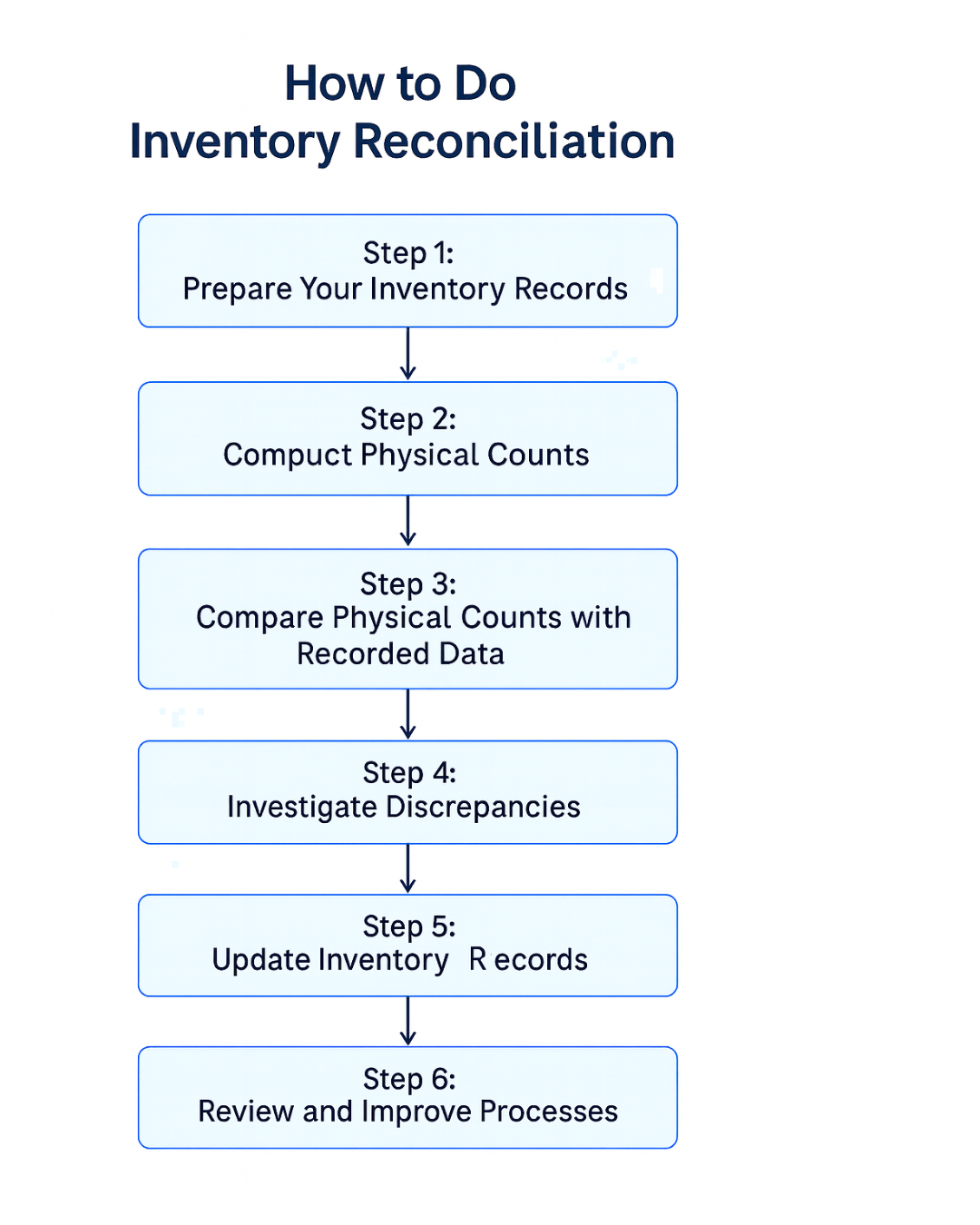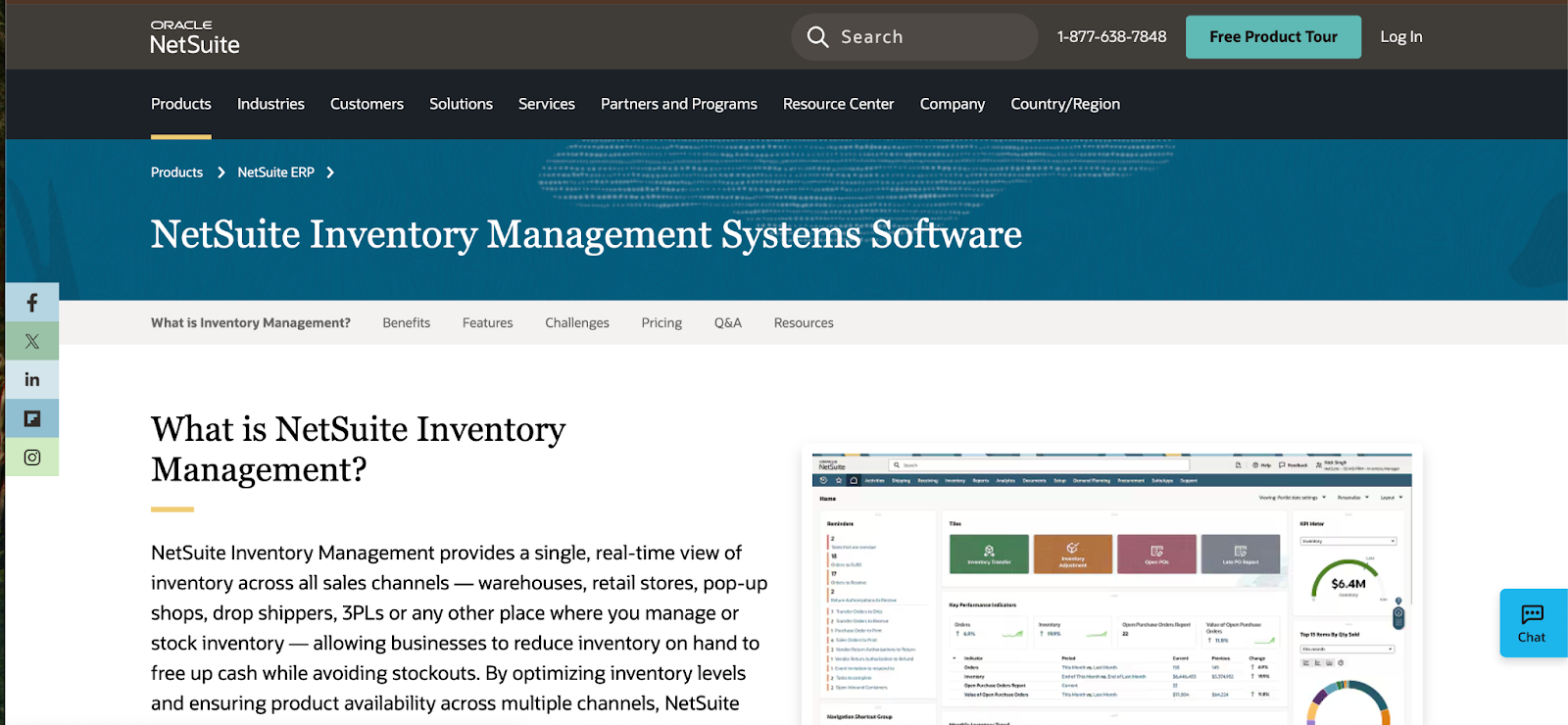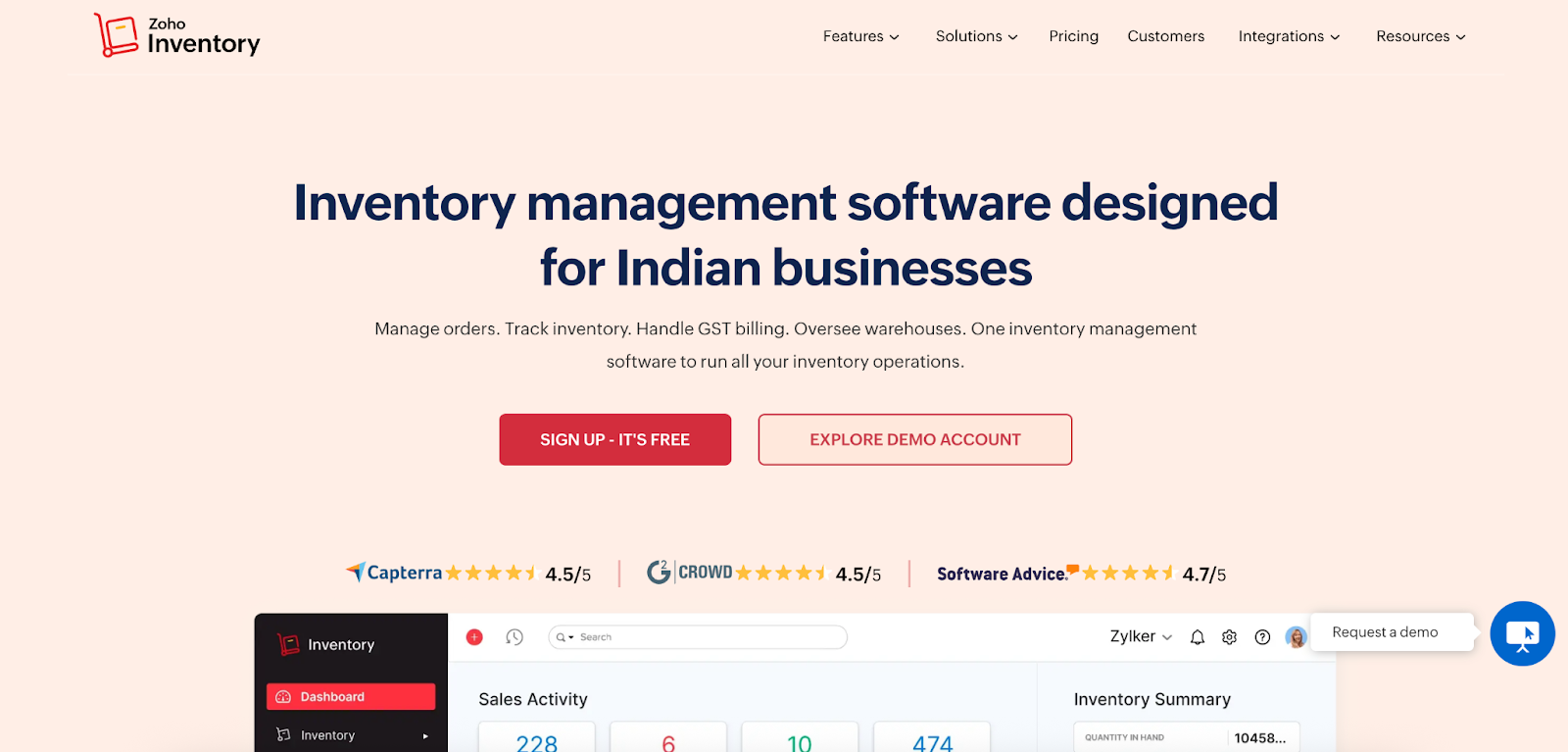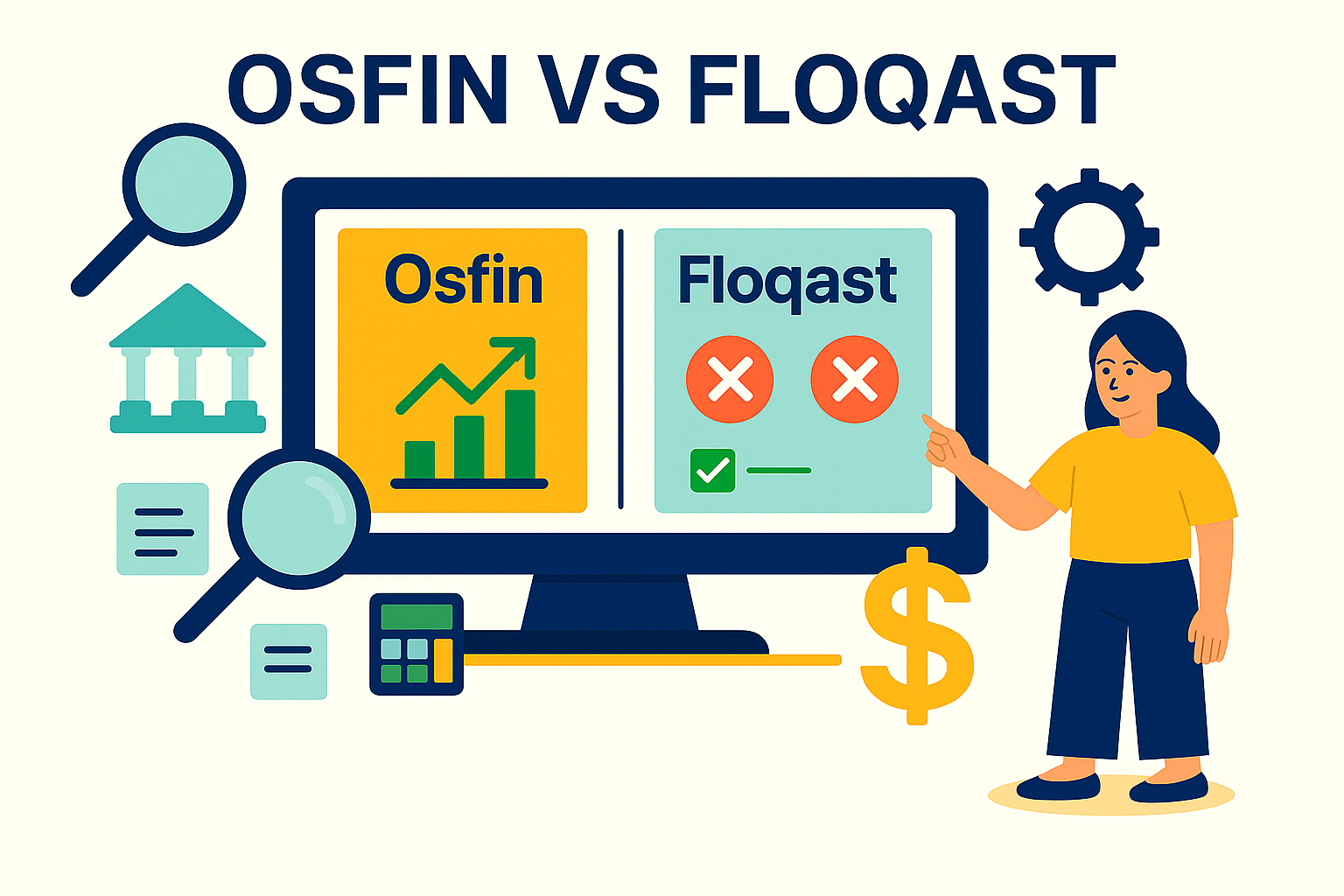Inventory Reconciliation: Complete Guide for 2025
Inventory errors cost business sales, customer trust, and profit. A missing item here or an unrecorded shipment there can quickly spiral into stockouts, overstocking, and frustrated customers.
Inventory reconciliation solves this by systematically matching your physical stock with what’s recorded in your systems. It helps uncover discrepancies caused by theft, damage, data entry mistakes, or unrecorded stock movements, allowing you to act before they impact your bottom line.
In 2025, global supply chains are more unpredictable, technology demands real-time accuracy, and customers expect flawless fulfillment. Businesses that make reconciliation a routine priority gain tighter control over inventory, better forecasting, and a stronger competitive edge in a fast-moving market.
In this article, we explore what inventory reconciliation is, how it is done, some common challenges and best practices to keep in mind while reconciling inventory, and the best tools to help you make the process easier.
What is Inventory Reconciliation?
Inventory reconciliation means comparing your physical stock counts to recorded inventory data in your systems, then investigating and correcting any differences.
Inventory records rarely match perfectly with what’s actually sitting on your shelves. Shipments get delayed, items get damaged, and sometimes human error creeps into data entry. Left unchecked, these gaps can distort reports, throw off forecasting, and cause costly operational hiccups. Inventory reconciliation is a control measure that keeps records accurate, prevents repeat mistakes, and ensures every business decision is based on reliable, real-time numbers.
Why Inventory Reconciliation is Critical in 2025

In 2025, rapidly changing market conditions make accurate inventory data non-negotiable. Global supply chains are more interconnected yet more vulnerable to disruptions, customer expectations for fast and error-free fulfillment continue to rise, and competition is fiercer across industries.
Against this backdrop, inventory reconciliation has become a strategic necessity for all businesses. Here’s why:
1. Avoiding Stockouts and Overstocks
Stock discrepancies can cause costly imbalances. Timely reconciliation helps prevent stockouts that lead to lost sales and disappointed customers, while also avoiding overstocks that tie up working capital and increase storage costs.
2. Improving Forecast Accuracy
Accurate inventory data feeds directly into demand forecasting tools, enabling better purchasing and production planning. Reconciliation ensures the data driving these forecasts reflects reality, reducing the risk of overestimating or underestimating demand.
3. Reducing Shrinkage
Regular reconciliation helps detect shrinkage like losses from theft, damage, or administrative errors, before they become huge issues. Early detection enables corrective measures, protecting both profitability and operational integrity.
4. Meeting Compliance and Audit Requirements
Many industries face regulatory and audit obligations that require precise inventory records. Frequent reconciliation ensures compliance, provides audit-ready documentation, and reduces the risk of heavy penalties or reputational damage.
Step-by-Step Inventory Reconciliation Process

Following a structured process makes reconciling inventory faster, more accurate, and easier to manage. Here’s how to approach it effectively:
Step 1: Prepare Your Inventory Records
Start by gathering the most recent data from your inventory management system. This should include SKUs, product descriptions, quantities, and storage locations.
Step 2: Conduct Physical Counts
Carry out a full inventory count or use cycle counting for regular partial checks. Assign trained staff and standardize counting methods to maintain accuracy. Clear labeling, organized storage, and well-defined counting zones help reduce the risk of double-counting or missed items.
Step 3: Compare Physical Counts with Recorded Data
Match the figures from your physical count against the quantities recorded in your system. Pay attention to even small differences, as these can signal process gaps or hidden problems in your supply chain.
Step 4: Investigate Discrepancies
When mismatches occur, determine the root cause. Common reasons usually include theft, damage, unrecorded transfers, supplier shortages, or data entry mistakes.
Step 5: Update Inventory Records
Once the correct figures are confirmed, update your inventory system to reflect the actual quantities on hand. Ensure related financial records are also adjusted so reporting remains accurate across departments.
Step 6: Review and Improve Processes
Document any recurring issues found during your reconciliation process and identify preventive actions. This could mean updating receiving procedures, improving storage practices, or introducing new technology for tracking.
Inventory Reconciliation Report: What to Include
Once your reconciliation process is complete, the findings should be documented in a clear, structured report. This provides a record of the activity and gives managers, finance teams, and auditors visibility into discrepancies, their causes, and the corrective actions taken.
A well-prepared inventory reconciliation report is a valuable reference for maintaining accountability across the organization.
It should include:
- Date and scope of reconciliation: Specify when the reconciliation took place and which locations, product categories, or storage areas were covered.
- List of items counted, with SKUs and descriptions: Provide detailed product identifiers to ensure clarity and traceability.
- Recorded system quantities: Document the quantities reflected in the inventory management system before reconciliation.
- Physical count quantities: Record the actual quantities found during the count.
- Discrepancy amounts and values: Show the numerical and monetary differences between recorded and actual counts.
- Identified causes for discrepancies: Outline the reasons uncovered during the investigation stage.
- Actions taken to resolve differences: Note adjustments made in the system and any related operational corrections.
- Recommendations for process improvements: Suggest procedural or system changes to reduce future discrepancies.
How to Reconcile Inventory Efficiently
Efficiency in inventory reconciliation involves maintaining accuracy while reducing the effort required from your team. You can make reconciliation a part of your operations instead of a disruptive task by combining smart processes with the right technology.
Here are three proven approaches:
1. Use Cycle-Wise Counting Instead of Annual Counts
Rather than shutting down operations for a full annual inventory, cycle counting breaks the process into smaller, more manageable parts. Specific product categories or storage areas are counted on a rotating schedule throughout the year.
For example, a retail store may count high-value electronics weekly while checking slower-moving items quarterly. This method keeps inventory data accurate year-round while minimizing disruption to daily sales activities.
2. Integrate Barcode Scanners or RFID
Manual counting leaves too much room for human error, especially in high-volume environments. Barcode scanners and RFID (Radio-Frequency Identification) technology make data capture faster and more accurate.
For instance, a warehouse equipped with RFID readers can automatically log stock movements as items enter or leave storage, cutting reconciliation time and eliminating the need for repeated manual checks.
3. Leverage Real-Time Inventory Tracking
The more up-to-date your inventory records, the easier it is to spot and address discrepancies quickly. Real-time tracking systems, often integrated with POS or ERP software, update quantities the moment a sale, return, or stock movement occurs.
An e-commerce business, for example, can use a POS-integrated inventory system that flags discrepancies as soon as they appear, allowing staff to investigate immediately instead of waiting for a scheduled count.
Inventory Reconciliation Tools for 2025
Modern inventory reconciliation tools bridge the gap between physical stock management and digital record-keeping. They speed up the counting and comparison process and automate data capture, reduce manual errors, and provide real-time visibility into stock movements. Here are some of the best tools:
1. NetSuite Inventory Management

NetSuite Inventory Management is a cloud-based ERP solution designed by Oracle for businesses that require real-time visibility into inventory levels across multiple locations. Its reconciliation capabilities help maintain accurate records by integrating purchasing, order management, and fulfillment data into one system. The platform’s automation features reduce manual work and improve the speed of identifying and resolving discrepancies.
Key Features:
- Automated replenishment based on demand forecasting
- Multi-location inventory visibility
- Serialized and lot tracking
- Integrated financial reporting for inventory valuation
2. Zoho Inventory

Zoho Inventory is an affordable and user-friendly solution suited for small to mid-sized businesses. It offers barcode scanning, multi-warehouse management, and straightforward integration with popular e-commerce platforms. Its reconciliation functions allow businesses to quickly compare system data with actual stock counts and make adjustments in just a few clicks.
Key Features:
- Batch tracking for perishable goods
- Integration with major shipping carriers
- Automated stock level alerts
- Comprehensive sales and purchase order management
3. Cin7

Cin7 is a cloud-based inventory management platform built for businesses that sell across various channels and locations. It integrates inventory control, point-of-sale, and order management into a single system, making reconciliation faster and more accurate. By syncing stock data in real time, Cin7 helps prevent overselling and provides immediate insight into discrepancies.
Key Features:
- Built-in POS system for retail locations
- Multi-channel e-commerce integration
- Automated purchase ordering and replenishment
- Detailed inventory and sales analytics
Common Inventory Reconciliation Challenges

Even with the best tools and processes in place, inventory reconciliation can present real-world challenges that impact accuracy and efficiency. Recognizing these issues is the first step toward solving them. Here are some of the most common inventory reconciliation issues that may come up:
1. Human Counting Errors
Manual counting is vulnerable to mistakes caused by fatigue, distraction, or inconsistent counting methods. Miscounts or double-counts are especially common in large warehouses or during high-pressure sales seasons, leading to inaccurate reconciliation results.
2. Data Entry Mistakes
Errors made when entering SKU numbers, quantities, or transaction details into the system can cause significant mismatches between recorded and actual inventory. Even a single incorrect entry can distort reports and complicate investigations.
3. Unrecorded Stock Movements
Stock transfers between locations or departments that aren’t properly logged can result in discrepancies during reconciliation. This often happens in fast-moving environments where documentation is overlooked in the rush to meet demand.
4. Theft and Shrinkage
Inventory losses from theft, whether internal or external, along with damage or spoilage, often go undetected until reconciliation. Without proactive tracking, these issues can persist and cause recurring discrepancies.
Best Practices for Inventory Reconciliation
While challenges like counting errors, unrecorded stock movements, and theft can disrupt even the best inventory systems, they’re far from unavoidable. Following proven best practices helps ensure that reconciliation is both accurate and efficient, while minimizing disruptions to daily operations.
1. Use Technology for Accuracy
Manual methods are prone to error, especially in high-volume environments. Introducing barcode scanners, RFID systems, and integrated inventory software significantly improves both speed and precision. These tools ensure that counts are captured instantly and recorded directly in your system, minimizing the risk of transcription errors and allowing real-time data updates.
2. Automate Where Possible
Automation is a must-have for businesses trying to maintain reliable inventory records. Use systems that automatically track stock movements, record adjustments, and update quantities in real time.
This mirrors how businesses automate financial reconciliation with powerful tools like Osfin, reducing manual effort, improving data integrity, and freeing teams to focus on more strategic tasks.
3. Train Staff Thoroughly
Accurate reconciliation depends heavily on the people conducting it. All team members should be trained in standardized counting procedures, documentation protocols, and the correct use of technology. Training should also cover why accuracy matters, not just for operational efficiency, but for meeting customer demand, maintaining profitability, and ensuring compliance.
4. Set a Regular Reconciliation Schedule
Leaving long gaps between reconciliations increases the risk of significant discrepancies. Establish a fixed schedule based on your business size, stock volume, and sales frequency.
For some businesses, weekly or monthly counts may be ideal, while others may benefit from quarterly reconciliations. Regularity ensures discrepancies are caught early, minimizing their impact on financial reporting and operational planning.
In Conclusion: Accurate Records Beyond Inventory
Accurate inventory reconciliation is the foundation for smooth operations, customer satisfaction, and profitable decision-making. When businesses know exactly what’s in stock, they can avoid costly surprises, improve forecasting, and respond quickly to market changes.
In 2025’s fast-paced business scene, where supply chains are complex and customer expectations about product accessibility are higher than ever, businesses that prioritize regular reconciliation gain a competitive edge. They can spot and fix problems early, reduce shrinkage, and maintain data that leadership can rely on for strategic planning.
However, inventory isn’t the only area where accuracy matters. Financial transactions, payment flows, and settlement data also require regular reconciliation to protect your financial standing, meet compliance requirements, and prevent costly errors or revenue loss. Just like inventory, these processes benefit from automation, accuracy, and timely exception handling.
That’s where Osfin comes in. Osfin automates high-volume financial and payments reconciliation, processing up to 30 million transactions in just 15 minutes with 100% accuracy. It easily draws data from numerous sources with 170+ integrations, its file-format agnostic engine processes all file formats, cleans data, and performs logic-based matching.
Osfin also offers real-time exception tagging with its ticketing and exception handling engine to flag errors, label them with reasons, and then auto-route them for resolution to the right teams. Osfin’s real-time reporting capabilities and enterprise-grade security keep you audit-ready and compliant at all times.
{{banner1.1}}
FAQs on Inventory Reconciliation
1. What is the purpose of inventory reconciliation?
Inventory reconciliation ensures that physical stock matches recorded data in your system. It helps detect discrepancies caused by errors, shrinkage, or unrecorded movements, enabling businesses to maintain accuracy and make better inventory-related decisions.
2. How often should a business reconcile inventory?
The frequency depends on business size, stock volume, and sales activity. Many companies use monthly or quarterly reconciliations, while high-volume businesses often use cycle counting for continuous accuracy throughout the year.
3. What’s the difference between a physical inventory count and cycle counting?
A physical inventory count involves counting all items at once, often annually. Cycle counting checks smaller portions of inventory regularly, reducing operational disruption while maintaining ongoing accuracy.
4. Can inventory reconciliation detect theft?
Yes, regular reconciliation can reveal discrepancies caused by theft, whether internal or external. By investigating unexplained shortages, businesses can identify and address security or process issues contributing to shrinkage.


